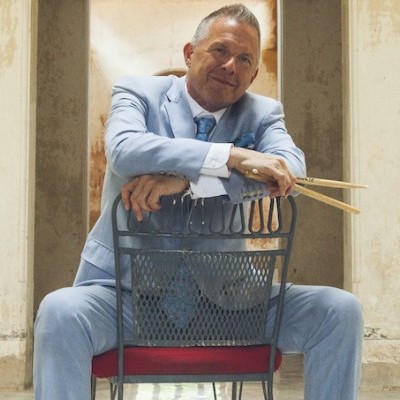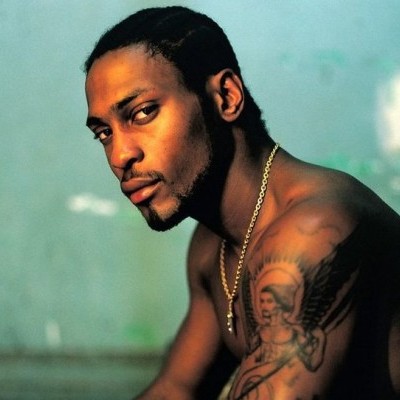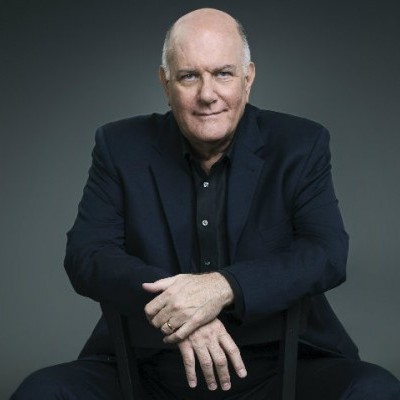Oct 28, 2025 10:47 AM
In Memoriam: Jack DeJohnette, 1942–2025
Jack DeJohnette, a bold and resourceful drummer and NEA Jazz Master who forged a unique vocabulary on the kit over his…

Victor Haskins cultivated his affinity for EWI as a student at Richmond’s Virginia Commonwealth University.
(Photo: Josh Marcus)When trumpeter and composer Victor Haskins teaches young students about jazz, he tries to explain to them that the music is less than a “what” and more of a “how” when expressing ideas. “Everything is centered around driving that point home,” said the Richmond, Virginia-based Haskins after giving a presentation to students at Washington, D.C.’s Oyster Adams Bilingual School this spring.
Haskins, 26, came to Oyster Adams as director of the Kennedy Center’s in-school jazz ensembles program. Students were mostly kindergartners, a situation that in lesser hands could prove challenging, given the level of sophistication and maturity typically required to appreciate jazz.
But the trumpeter believes that by not pandering to his young audience and being honest with them about what he’s teaching, he reaches them more effectively. “Everybody has the capacity to understand things that are complex, difficult or deep,” said Haskins, who also is the director of jazz ensembles at the College of William & Mary in Williamsburg. “So, I just try to present what we are doing in a way that’s very logical and very exciting. And I try to bring in a wide variety of sounds, grooves and ideas that you might hear in any range of jazz music.”
In addition to playing trumpet, Haskins piqued many students’ curiosity by playing an electronic wind instrument; he wanted them to understand that jazz isn’t solely about acoustic instrumentation. Drummer Tony Martucci and bassist Randall Pharr—Haskins’ regular trio mates—joined him for the school presentation.
The bandleader features the EWI prominently on his self-released sophomore album, Showing Up. On the billowing “Grey,” the strutting “Five In The Pocket” and the probing “Psithurism,” Haskins creates striking electro-textures and tonal colors on the EWI that place him in the lineage of trumpeters like Miles Davis, Jon Hassell and Christian Scott aTunde Adjuah, who all have used electronics to articulate and extend their music vocabularies.
The EWI typically is associated with reed players, Michael Brecker being among its more notable practitioners. When Haskins was attending Virginia Commonwealth University in Richmond, many of his friends were into the late saxophonist’s work. “He was an amazing musician, but I wasn’t into Michael Brecker, personally. But I became aware of the EWI through his music,” Haskins recalled.
Haskins sought the sonic explorations of the EWI while conceiving his “Improvi-Story” presentation. He had become frustrated with trying to make the trumpet emit sounds and textures that were beyond its capacity. “I felt like I was trying to fit a square peg inside a round hole,” he said.
Haskins found it challenging to imbue the EWI with some of the more human elements that the trumpet lends itself to: the manipulation of sound through embouchure, facial muscles and the positioning of valves. “Most of the emotional content on the EWI comes from how you design and trigger the individual sound patches,” he explained.
Haskins’ 2013 debut, The Truth, is an acoustic jazz affair. And even though some of the compositions on Showing Up were composed between 2013 and 2014, Haskins wasn’t compelled to release a sophomore album until six years later, partly because he felt that he didn’t have anything worth saying musically. The following year, though, he began exploring the EWI.
In addition to searching for new sounds, he yearned for personal growth, which led him to start going to therapy in 2018. “I realized that I let that sit on the back burner while I was working on music,” he explained. “I realized that I wasn’t completely satisfied with how I was living life, even though I was accomplishing quite a few things professionally. That’s where the title comes from.”
Haskins applied for an arts grant to help fund the making of Showing Up, but didn’t get it. At first, he contemplated that as an excuse to delay the release. But his newfound sense of self-discovery, both personally and professionally, continued to propel him forward.
“I’m in the process of becoming; we are always in the act of becoming,” Haskins said. “So, I decided to make Showing Up as a timestamp. Everything sort of happened when it was meant to happen.” DB

Jack DeJohnette boasted a musical resume that was as long as it was fearsome.
Oct 28, 2025 10:47 AM
Jack DeJohnette, a bold and resourceful drummer and NEA Jazz Master who forged a unique vocabulary on the kit over his…

Always a sharp dresser, Farnsworth wears a pocket square given to him by trumpeter Art Farmer. “You need to look good if you want to hang around me,” Farmer told him.
Sep 23, 2025 11:12 AM
When he was 12 years old, the hard-swinging veteran drummer Joe Farnsworth had a fateful encounter with his idol Max…

D’Angelo achieved commercial and critical success experimenting with a fusion of jazz, funk, soul, R&B and hip-hop.
Oct 14, 2025 1:47 PM
D’Angelo, a Grammy-winning R&B and neo-soul singer, guitarist and pianist who exerted a profound influence on 21st…

Kandace Springs channeled Shirley Horn’s deliberate phrasing and sublime self-accompaniment during her set at this year’s Pittsburgh International Jazz Festival.
Sep 30, 2025 12:28 PM
Janis Burley, the Pittsburgh International Jazz Festival’s founder and artistic director, did not, as might be…

Jim McNeely’s singular body of work had a profound and lasting influence on many of today’s top jazz composers in the U.S. and in Europe.
Oct 7, 2025 3:40 PM
Pianist Jim McNeely, one of the most distinguished large ensemble jazz composers of his generation, died Sept. 26 at…